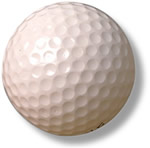|
Fluid friction occurs when a solid
object travels through a liquid or gas. There is also
resistance to motion within a fluid, but that is usually
classified under fluid dynamics and is not covered here.
Factors that determine the amount of fluid friction on a
solid object include the viscosity of the fluid, the
surface texture of the solid object and the shape of the
object. By changing any of these factors, you can
increase or decrease the amount of resistive force of
fluid friction.
Questions you may have include:
-
How do you change friction caused by
viscosity?
-
How can you change friction caused
by the object surface?
-
How can you change friction caused
by shape?
Changing viscosity friction
Viscosity is the resistance to flow or
changing the shape of a fluid. It is a factor in fluid
friction.
Moving a solid object through air is
much easier than moving through water because of the
fact that water has a greater density and a higher
viscosity. Likewise, it is easier to move an object
through water than it is through a heavy oil.
If you can change the type of fluid that
is resisting motion, you would obviously use a less
dense fluid to reduce friction and a denser fluid to
increase it.
Increased heat will reduce the viscosity
of a fluid and thus the fluid friction. A good example
is how a gasoline engine may be difficult to start on a
cold winter day, because its oil is so thick. Once the
engine heats up, the oil becomes thinner and the engine
easily operates.
Thus you can reduce fluid friction by
heating the fluid.
Fluids are often used in lubrication,
because they reduce the friction of solid parts rubbing
against each other. Thin oils produce less friction than
thicker oils with more viscosity. In engines, there is a
trade-off, because once a thin oil becomes very hot, it
may become too thin to protect the engine. But also a
thick oil may be too thick and have too much friction to
even allow the engine to start in very cold weather.
Multi-grade oils seem to be a good compromise to the
heat and cold problem.
A thin layer of mud can be used to
lubricate objects sliding together, but it the layer is
too thick, the resistance to motion increases as the
object must plow through the thick fluid.
Changing surface characteristics
You can reduce the friction of a fluid
sliding along a surface by improving the surface
characteristics or texture of the solid object. Seldom
are the surface characteristics changed to purposely
increase the fluid friction.
A rough surface texture will provide
more resistance than a smooth surface in most cases.
Even if the surface is smooth, having protrusions such
as rivets and screw heads can increase the friction.
An interesting aspect of fluid friction
is that setting up tiny areas of turbulence on the
surface will reduce the friction even more. A good
example of that are the dimples on the surface of a golf
ball. If an ball had a completely smooth surface, it
would not fly as far as an identical ball with a dimpled
surface. The reason is that each dimple creates a small
area of turbulence on the surface. This means the air is
then flowing over air in that area and not along the
surface of the ball, thus reducing the resistive
friction.

Dimples on golf ball reduce surface
friction
But note that if the dimples were too
large or deep, then the turbulence would cause the ball
to slow down. Dimple dimensions and locations are very
important in the design of golf balls.
The shape of the solid object moving
through a fluid is seldom classified under friction.
Usually it is a subject of fluid dynamics, air
resistance or water resistance.
By streamlining the object moving
through a fluid, you can greatly decrease the
resistance. Moving a flat surface through a fluid such
as air or water meets with much more resistance than
does a sharply curved surface.

A shark is streamlined so it can move
through water easily
When an airliner lands and is trying to
slow down, large flaps on the wings provide a flat
surface and extra air resistance to help the aircraft
some to a stop.
Also, opening the windows in your car
increases the air resistance due to the airflow inside
the vehicle.
Viscosity of the fluid, how smooth the
surface of the solid object is, and the shape of the
object are factors in changing fluid friction. By
decreasing fluid friction you can make it easier to move
objects through a fluid, while increasing friction if
often used to slow down motion or to stop a moving
object. |